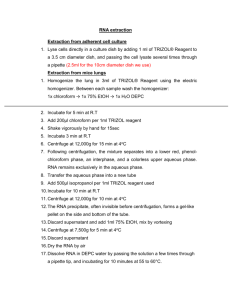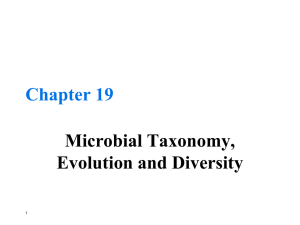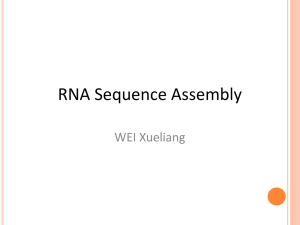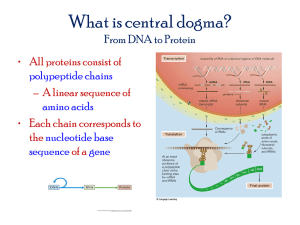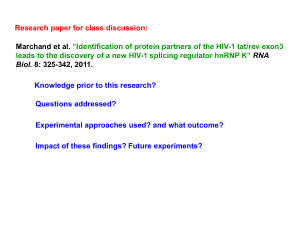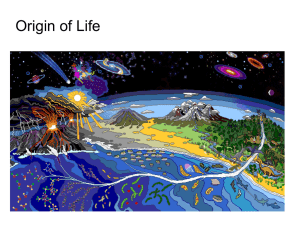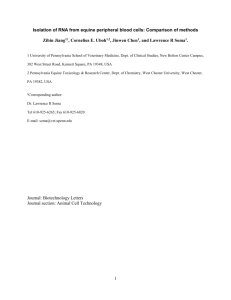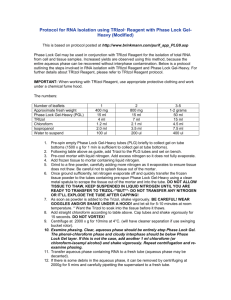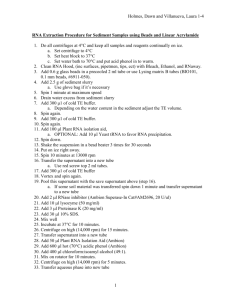Anno II - numero 4 - Marzo 2015
advertisement
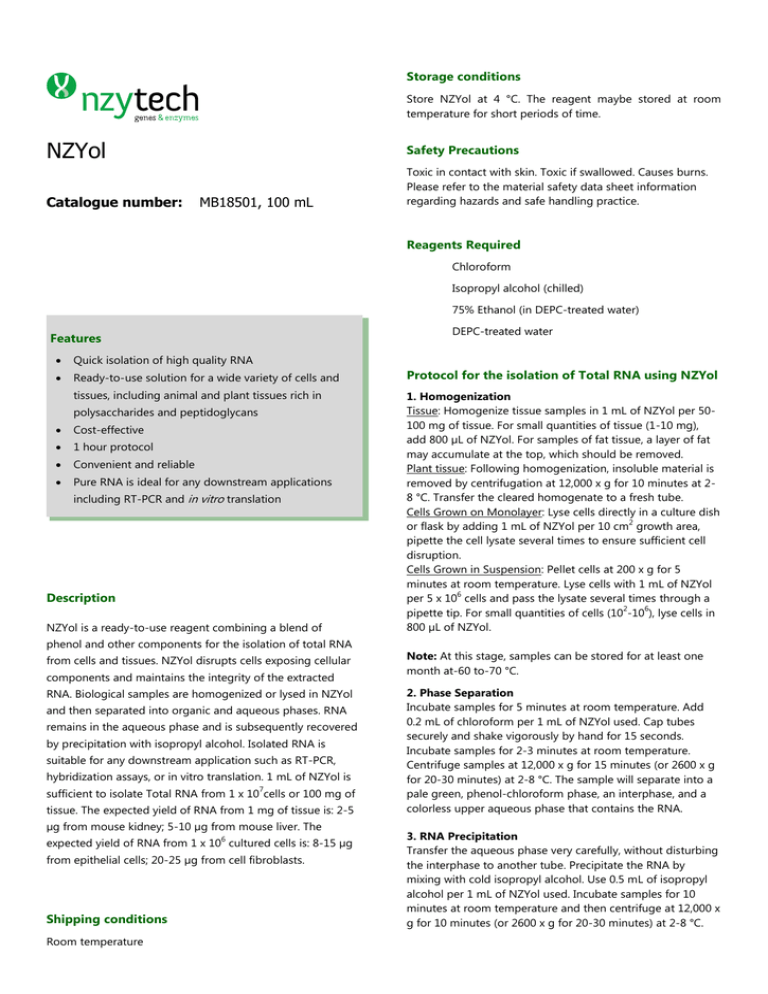
Storage conditions Store NZYol at 4 °C. The reagent maybe stored at room temperature for short periods of time. NZYol Catalogue number: Safety Precautions MB18501, 100 mL Toxic in contact with skin. Toxic if swallowed. Causes burns. Please refer to the material safety data sheet information regarding hazards and safe handling practice. Reagents Required Chloroform Isopropyl alcohol (chilled) 75% Ethanol (in DEPC-treated water) DEPC-treated water Features Quick isolation of high quality RNA Ready-to-use solution for a wide variety of cells and Protocol for the isolation of Total RNA using NZYol tissues, including animal and plant tissues rich in 1. Homogenization Tissue: Homogenize tissue samples in 1 mL of NZYol per 50100 mg of tissue. For small quantities of tissue (1-10 mg), add 800 μL of NZYol. For samples of fat tissue, a layer of fat may accumulate at the top, which should be removed. Plant tissue: Following homogenization, insoluble material is removed by centrifugation at 12,000 x g for 10 minutes at 28 °C. Transfer the cleared homogenate to a fresh tube. Cells Grown on Monolayer: Lyse cells directly in a culture dish 2 or flask by adding 1 mL of NZYol per 10 cm growth area, pipette the cell lysate several times to ensure sufficient cell disruption. Cells Grown in Suspension: Pellet cells at 200 x g for 5 minutes at room temperature. Lyse cells with 1 mL of NZYol 6 per 5 x 10 cells and pass the lysate several times through a 2 6 pipette tip. For small quantities of cells (10 -10 ), lyse cells in 800 μL of NZYol. polysaccharides and peptidoglycans Cost-effective 1 hour protocol Convenient and reliable Pure RNA is ideal for any downstream applications including RT-PCR and in vitro translation Description NZYol is a ready-to-use reagent combining a blend of phenol and other components for the isolation of total RNA from cells and tissues. NZYol disrupts cells exposing cellular components and maintains the integrity of the extracted RNA. Biological samples are homogenized or lysed in NZYol and then separated into organic and aqueous phases. RNA remains in the aqueous phase and is subsequently recovered by precipitation with isopropyl alcohol. Isolated RNA is suitable for any downstream application such as RT-PCR, hybridization assays, or in vitro translation. 1 mL of NZYol is 7 sufficient to isolate Total RNA from 1 x 10 cells or 100 mg of tissue. The expected yield of RNA from 1 mg of tissue is: 2-5 μg from mouse kidney; 5-10 μg from mouse liver. The 6 expected yield of RNA from 1 x 10 cultured cells is: 8-15 μg from epithelial cells; 20-25 μg from cell fibroblasts. Shipping conditions Room temperature Note: At this stage, samples can be stored for at least one month at-60 to-70 °C. 2. Phase Separation Incubate samples for 5 minutes at room temperature. Add 0.2 mL of chloroform per 1 mL of NZYol used. Cap tubes securely and shake vigorously by hand for 15 seconds. Incubate samples for 2-3 minutes at room temperature. Centrifuge samples at 12,000 x g for 15 minutes (or 2600 x g for 20-30 minutes) at 2-8 °C. The sample will separate into a pale green, phenol-chloroform phase, an interphase, and a colorless upper aqueous phase that contains the RNA. 3. RNA Precipitation Transfer the aqueous phase very carefully, without disturbing the interphase to another tube. Precipitate the RNA by mixing with cold isopropyl alcohol. Use 0.5 mL of isopropyl alcohol per 1 mL of NZYol used. Incubate samples for 10 minutes at room temperature and then centrifuge at 12,000 x g for 10 minutes (or 2600 x g for 20-30 minutes) at 2-8 °C. 4. RNA Wash Remove the supernatant. Wash the pellet once with 75% ethanol, adding at least 1 mL of ethanol per 1 mL of NZYol used. Vortex samples and centrifuge at 7500 x g for 5 minutes at 2-8 °C. Note: At this stage, samples can be stored for one week at 28 °C, or 12 months at-5 to -20 °C. 5. Re-dissolving the RNA Air-dry the pellet and dissolve in RNase free water or DEPCtreated Water by pipetting the solution up and down. Incubate for 10 minutes at 55-60 °C if necessary. Store RNA at -70 °C Troubleshooting Genomic DNA contamination Insufficient volume of NZYol used Ensure the usage of the recommended volumes of NZYol. Incomplete Lysis or homogenization Homogenize tissue thoroughly and centrifuge to remove insoluble material. Contamination of interphase layer during RNA separation Pipette off the aqueous phase very carefully. RNA degradation RNase contamination The protocol must be carried out carefully in a DNA-free, RNase-free environment. Low RNA yield Loss of pellet If starting sample is small, the RNA pellet may not be easily visualized after isopropyl alcohol precipitation, so care must be taken when removing the supernatant from the pellet Incomplete lysis or homogenization Homogenize tissue thoroughly and centrifuge to remove insoluble material. Pipette resultant cell lysate up and down thoroughly until it becomes visually less viscous Revised 01/14 Estrada do Paço do Lumiar, Campus do Lumiar, Edifício E, R/C, 1649-038 Lisboa Tel: +351.213643514 Fax: +351.217151168 www.nzytech.com
